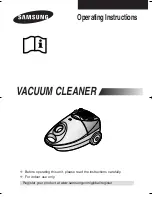
36
About “nanoe™”
Generating environment of nanoe™
A small amount of ozone is generated.
●
nanoe™ is generated using the air in the room and hence,
depending on the temperature and humidity, nanoe™ may not
be generated.
●
Conditions for generations
Surrounding temperature: About 5 °C to 35 °C (dew-point
temperature: more than about 2 °C)
Relative humidity: About 30 % to 85 %
●
When nanoe™ is generated, small amount of
ozone will be released. However, the quantity
will be at the usual level in forest or natural
environment, and not harmful to human
beings.
Functions of the anti-fungus assembly
It inhibits the enzyme with the anti-fungus agent and keeps water in the tray clean.
●
Testing trustee: Japan spinning inspection association
●
Test method: Verify the method to prevent mold bacteria (Halo method).
●
Anti-fungus method: Install the anti-fungus assembly to the tray.
●
Target: Humidifying filter in the tray
●
Test outcome: confirm that inhibited. [No. 09006504-1]
About nanoe™ technology
Further information
nanoe
™
The nanoe™, generated from the most advanced nanotechnology, is a kind of a nano-sized ion particle
coated with water particles. With nanoe™ technology, the effect of sterilization
٭
1
, inhibiting allergic
substance (pollen)
٭
2
, inhibiting mold bacteria
٭
3
and deodorization
٭
4
can be achieved. Furthermore, it
creates an atmosphere for beautiful, moisturized skin.
<Airborne bacteria> The result is of a 4 hours test in closed space of 25 m
3
, instead of in actual application space.
<Adhering bacteria> The result is of a 8 hours test in closed space of 23 m
3
, instead of in actual application space.
The deodorizing effect differs depending on the surrounding environment (temperature / humidity), operation time, or type of odor / textile.
●
These are the verification results of nanoe device, and these are different from the verification results of this product.
٭
1 <Airborne bacteria>
●
Testing organization: Kitasato Research Center of Environmental Sciences
●
Test method: Suspend bacteria in the test chamber of 25 m
3
and measure the bacteria count in the air.
●
Inhibiting method: Emitting nanoe™
●
Target: airborne bacteria
●
Test outcome: inhibited 99 % and above in 4 hours. [Test number 24_0301_1]
<Adhering bacteria>
●
Testing trustee: Japan Food Research Laboratories
●
Test method: Suspend bacteria in the test chamber of 23 m
3
and measure the bacteria count adhered to a cloth.
●
Inhibiting method: Emitting nanoe™
●
Target: bacteria that was ingrained in standard cloth
●
Test outcome: inhibited 99 % and above in 8 hours [No. 13044083003-01]. Each test carried out on only one type of bacteria.
٭
2
●
Testing organization: Panasonic Corporation Analysis Center
●
Test method: Measure allergic substances adhered to a cloth with ELISA method in the test chamber of 23 m
3
.
●
Inhibiting method: Emitting nanoe™
●
Target: adhered allergic substance of pollen
●
Test outcome: inhibited 88 % and above in 8 hours. [BAA33-130402-F01]
٭
3
●
Testing trustee: Japan Food Research Laboratories
●
Test method: Confirm fungi adhered to a cloth in the test chamber of 23 m
3
.
●
Inhibiting method: Emitting nanoe™
●
Target: adhered fungi
●
Test outcome: Confirm the effect in 8 hours. [No. 13044083002-01]
٭
4
●
Testing organization: Panasonic Corporation Analysis Center
●
Test method: Conduct verification using six grades odor intensity measurement method in the test chamber of 23 m
3
.
●
Deodorizing method: Emitting nanoe™
●
Target: adhered cigarette odor
●
Test outcome: odor intensity drops 1.2 grades within 2 hours. [BAA33-130125-D01]
nanoe™ and the nanoe™ mark are trademarks of Panasonic Corporation.
Summary of Contents for F-VR401
Page 2: ...2 ...
Page 43: ...VR401 43 ...









































